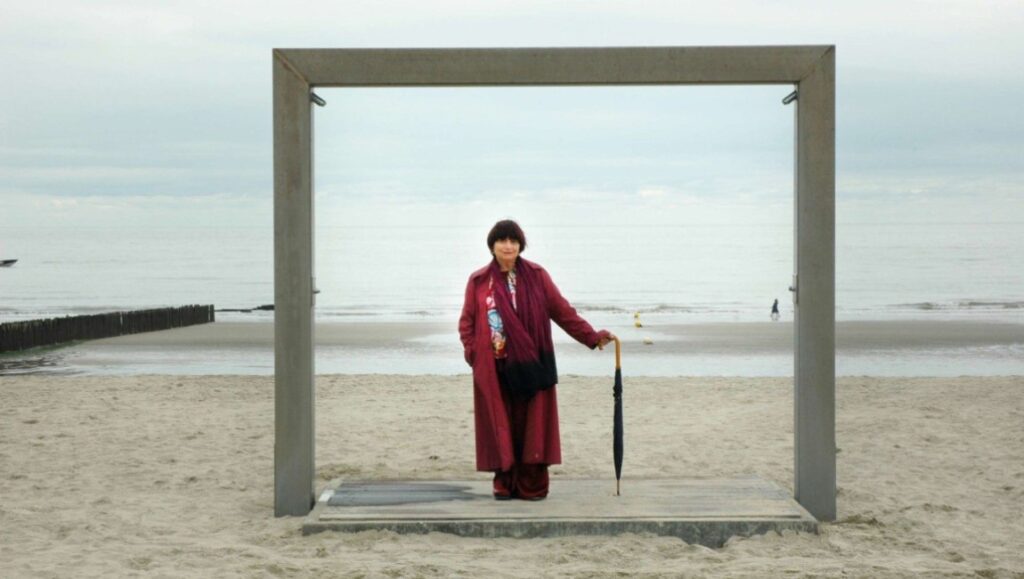Agnès Varda takes center stage in her self-proclaimed “last film,” and as a “little old lady, pleasantly plump and talkative, telling her life story.” If this opening statement doesn’t convince you of just how humble one of the most important Left Bank filmmakers is, then the purely allegorical introduction — mirrors precariously set up on the beach as objective eyes to the world — confirms Varda’s rare and self-effacing approach to filmmaking and her view of life itself. Although more closely aligned with the Left Bank movement, Varda is often cited as directing the first French New Wave film: Before tit-for-tat philosophical disputes ever surfaced in the nouvelle vague, Varda released her debut feature, 1956’s La Pointe Courte, exploring many of the techniques and themes later contemplated by more recognizable French New Wave names — Jean-Luc Godard, François Truffaut, Eric Rohmer and Claude Chabrol, to name a few. But Varda carved out her own creative style throughout the rest of her career, distancing herself from her peers and resulting in a comparatively lower historical profile.
Masquerading as an autobiography, The Beaches of Agnès is really an homage to Varda’s creative inspirations and all the people who have touched her life. The director starts with her childhood in Belgium and guides us through her past using archive photos and footage, interviews, reenactments, staged vignettes, and Varda herself revisiting the titular beaches and other landscapes. The narrative agreeably drifts from one subject to the next, weaving chronologically both her personal and professional histories. And if The Beaches of Agnès is experimental, so too was its creator’s life, as Varda continually explored and expanded her creative impulses over her decades long career (which to her meant dressing up as a potato during a photo exhibition on one occasion, and, on another, running an electrical cord from her house, through the neighborhood, just so she could shoot her film in a nearby café). In Varda’s latest, that creativity is evident in the way she brings dreams and memories to life; cleverly staged reenactments have an air of surrealism, such as the acrobatic troupe on the beach set up seemingly to indulge a youthful dream. Likewise, she visually demonstrates how she would maneuver her first car a minimum of 13 times to make the tight turn down her alley — for this she sits behind a cardboard cutout of her automobile on a dolly, pushing herself back and forth with her feet.
But what makes The Beaches of Agnès so remarkable is the filmmaker’s balance of the playful and upbeat with the more tender and melancholy: It’s a film just as much about the vibrance of life as it is about its passing, and Varda frequently reminisces unapologetically about friends who she’s lost. No one’s more prominent in this regard than Jacques Demy, who Varda married in 1962 and who she shared a loving bond with in life and creativity until his death in 1990. The open sentimentality Varda exercises as she talks about Demy and his death, her kids, her friends and even her work is incredibly moving. There’s a playfulness and joy inherent that allows Varda to do such things as dance in front of colorful beach accoutrements, giving the scenes where she discusses her innermost feelings an added grace. After seeing The Beaches of Agnès there’s no question where the character of Mona in the director’s Vagabond comes from: A rebel and free spirit, from past to present, Agnès Varda’s vigor for life is only matched by her sense of humor and curiosity. The film closes with Varda’s 80th birthday, replete with 80 brooms she receives as gifts (“broom” in French slang means “year”). But instead of dwelling on her old age, Varda gleefully counts all the brooms, including four toilet brushes and one sent via e-mail from Chris Marker — Agnès Varda exudes whimsy even as she enters the twilight years of her life, and her film is that much more enjoyable for it.


Comments are closed.